Results 11,601 to 11,610 of 12089
Thread: Anandtech News
-
12-09-22, 02:54 AM #11601
Anandtech: SK hynix Reveals DDR5 MCR DIMM, Up to DDR5-8000 Speeds for HPC
One of the world's biggest semiconductors and manufacturers of DRAM, SK hynix, has unveiled it has working samples of a new generation of memory modules designed for HPC and servers. Dubbed Multiplexer Combined Ranks (MCR) DIMMs, the technology allows high-end server DIMMs to operate at a minimum data rate of 8 Gbps, which is an 80% uptick in bandwidth compared to existing DDR5 memory products (4.8 Gbps).
Typically, the most common way to ensure higher throughput performance on DIMMs is through ever increasing memory bus (and chip) clockspeeds. This strategy is not without its drawbacks, however, and aiming to find a more comprehensive way of doing this, SK hynix, in collaboration with both Intel and Renesas, has created the Multiplexer Combined Rank DDR5 DIMM.
Combining Intel's previously-unannounced MCR technology for its server chips and Renesas's expertise in buffer technology, SK hynix claims that their DDR5 MCR DIMM has 66% more bandwidth than conventional DDR5 DIMMs, with an impressive 8 Gbps/pin (DDR5-8000) of bandwidth. SK hynix themselves claim that the MCR DIMM will be 'at least' 80% faster than what's currently out there DDR5-wise, but it doesn't quantitate how it reaches this figure.
The technology behind the MCR DIMM is interesting, as it enables simultaneous usage of two ranks instead of one, in essence ganging up two sets/ranks of memory chips in order to double the effective bandwidth. Unfortunately, the details beyond this are slim and unclear – in particular, SK hynix claims that MCR "allows transmission of 128 bytes of data to CPU at once", but looking at the supplied DIMM photo, there doesn't seem to be nearly enough pins to support a physically wider memory bus.
More likely, SK hynix and Intel are serializing the memory operations for both ranks of memory inside a single DDR5 channel, allowing the two ranks to achieve a cumulative effective bandwidth of 8Gbps. This is supported by the use of the Renesas data buffer chip, which is shown to be on the DIMM in SK hynix's photos. Conceptually, this isn't too far removed from Load Reduced DIMMs (LRDIMMs), which employs a data buffer between the CPU and memory chips as well, though just how far is difficult to determine.
More curious, perhaps, is that this design puts a great deal of faith into the ability of the physical memory bus and host controller (CPU) to be able to operate at DDR5-8000 (and higher) speeds. Normally the bottleneck in getting more memory bandwidth in server-grade systems is the memory bus to begin with – having to operate at slower speeds to accommodate more memory – so going a route that requires such a fast memory bus is definitely a different approach. In either case, the ability to run DIMMs at DDR5-8000 speeds in a server would be a significant boon to memory bandwidth and throughput, as that's often in short supply with today's many-core chips.
As SK Hynix has partnered up with Intel via its MCR technology and using buffer technology from Renesas, MCR would seem to be an Intel-exclusive technology, at least to start with. As part of SK hynix's press release, Intel for its part stated that they "look forward to bringing this technology to future Intel Xeon processors and supporting standardization and multigenerational development efforts across the industry.” In the interim, this appears to be a technology still under active development, and SK hynix is not publishing anything about availability, compatibility, or pricing.
While SK Hynix hasn't gone too much into how MCR DIMM is twice as fast as conventional DDR5 memory, this product is designed for the high-performance computing (HPC) and server industries, and it's unlikely we'll see MCR DIMMs in any form on consumer-based systems. We expect to learn more in the not-too-distant future.
Source: SK Hynix
More...
-
12-09-22, 02:54 AM #11602
Anandtech: The MSI MEG Ai1300P PCIE5 1300W PSU Review: The ATX 3.0 Era Has Begun
Just under a year since the specification was first announced, the ATX 3.0 era for power supplies is now underway. The updated version of the Intel-maintained specification introduced several notable changes to PC power supply designs, most notably the introduction of the 600 Watt-capable 12VHPWR connector and associated cabling. Altogether, ATX 3.0 is designed to lay the groundwork for future video cards (and other high-powered accelerators) by providing for a single-cable power connection that can better accommodate the high total and rapid shifts in power consumption a video card can undergo.
The biggest change since the addition of the 12V 6-pin “PCIe” power connector in the late 00s, the ATX 3.0 era has come with some new opportunities, both for computing products and for computing problems. The use of adapters has, in short, not gone well for front-runner NVIDIA, with a small but serious number of incidents of 12VHPWR adapters melting down. Meanwhile on the power supply side of matters, this has been a not-unwelcome boon; not only are native ATX 3.0 power supplies the preferred way to go from a design standpoint, but the adapter problems have helped to underscore this advantage. So for the power supply vendors who are among the first to get their ATX 3.0 designs out the door, there’s no shortage of demand for their latest and greatest wares, as well as a fresh opportunity to innovate and set themselves apart from the competition.
In today’s review, we are taking a look at our first ATX 3.0 power supply – and indeed, among the world’s first: the MSI MEG Ai1300P PCIE5. A beefy, 1300W PSU that is designed to be fully compliant with the ATX 3.0 specification, the Ai1300P is a look at what’s to come for the future of high-end PC PSUs, as the market slowly-but-inevitably incorporates ATX 3.0 compliance in order to feed ever more power-hungry video cards and other PCIe devices.
More...
-
12-14-22, 10:45 AM #11603
Anandtech: Intel NUC13 Extreme Raptor Canyon Review: Sizzling SFF Performance Powerho
Intel officially unveiled the details of their Raptor Lake-based NUC13 Extreme last month. Based on the desktop Raptor Lake processors, the 13.7L NUC13 Extreme is Intel's biggest NUC yet. The model retains the Compute Element / baseboard combination seen in previous Extreme NUCs. However, the extra volume has enabled the company to incorporate a 150W TDP processor and support large discrete GPUs. Given the power-packed components, it is obvious that Intel is taking the NUC family to performance levels that have hitherto remained out of reach of small form-factor (SFF) machines. Does the NUC13 Extreme deliver on its vision?
Read on for our detailed performance review, including a look at the industrial design and other innovations that the system brings to the table.
More...
-
12-21-22, 11:36 PM #11604
Anandtech: The Ubiquiti Diaries: A Site-to-Site VPN Story
Ubiquiti Networks is a popular vendor of networking-related equipment in the SMB / SME space. Their gear is immensely popular among prosumers too, thanks to the combination of ease of use and the ability to customize for specific requirements. I have been running an Ubiquiti UniFi installation at home for the last five years or so, and recently had the opportunity to create a new deployment in another country. There were two main reasons to go with Ubiquiti for the new location - a single management plane for both sites, and the ability to easily create a site-to-site VPN. More than three months into the deployment, I ended up encountering a host of issues worthy of documentation to help folks who might encounter them in their own installations. This article gives an overview of the various site-to-site VPN options available with Ubiquiti's gear, and things to keep in mind while adopting them.
More...
-
01-03-23, 06:00 PM #11605
Anandtech: NVIDIA CES 2023 Special Address Live Blog (8am PT/16:00 UTC)
Kicking off CES 2023, the first presentation of the week comes from NVIDIA. The prolific GPU vendor is at the show to talk about new consumer hardware for desktops and laptops, as well as software updates for its Studio ecosystem, robotics, and Drive platforms.
More...
-
01-03-23, 06:00 PM #11606
Anandtech: Intel Announces Gracemont-based N-Series Processors For Entry-Level Mobile
Although Intel's 13th Gen Core mobile announcement tends to steal the limelight away from many of its other product announcements, Intel has also announced four new SKUs from its N-series of processors. Representing the entry-level, Intel's latest N-series processor for mobile and desktop (codenamed Alder Lake-N), replacing Intel's Tremont architecture-based Jasper Lake platform. Alongside up to 8 CPU cores, these new low-end SoCs include Wi-Fi 6E connectivity, GNA 3.0 background noise suppression, and integrates IPU and MIPI camera support rolled into one solution. This makes it a suitable series of products designed for video conferencing and high-end wireless connectivity for entry-level notebooks, Chromebooks, and low-power users.
Based around the same Gracemont CPU microarchitecture Intel uses for efficiency (E) cores in its 12th and 13th Gen Core processors, Intel's N-Series processors are designed for low-powered and affordable slimline notebooks and desktops, where efficiency is vital. Intel is also claiming double-digit performance gains with the latest quad-core Intel Inside N200 processor compared to the previous series, with 28% better overall application performance and up to 28% gains in web browsing performance.
Stepping up to the Core i3 N-series processors, Intel is claiming gains of up to 42% in overall application performance, which is advantageous from an efficiency and performance per watt perspective. Not only is the N-series the entry-level processors designed for budget Windows notebooks and Chromebooks, but Intel's claims look to surpass its previous Jasper Lake models, such as the N6000, out of the water. With either eight or four Gracemont cores, the same efficiency (E) core is used in Intel's 13/12th Gen Core series families.
Regarding features, Intel has plenty up its sleeve as it promises advantageous video conferencing capabilities due to its integral Image Processing Unit (IPU) and MIPI camera interface, along with dynamic noise suppression for microphones. With noise suppression handy for video conference calls and eliminating background noise, it uses a low-powered Gaussian and Neural Accelerator (GNA 3.0) technology to achieve this.
Focusing on connectivity, the N-series can accommodate up to four USB 3 and eight USB 2 and has nine PCIe 3.0 lanes available for devices and controllers. By proxy, the Intel N-series now also benefits from Intel's WI-Fi 6E CNVi with BT 5.2 device connectivity, along with USB 3.2 Gen 2 and DisplayPort 1.4 support.
The Core i3 N-series CPUs come with eight cores and eight threads, versus the four cores and four threads of the Intel Processor N200 and N100 chips. The Core i3-N305 is the top-tier SKU for the entry-level series, with eight Gracemont cores that can turbo up to 3.8 GHz and a maximum turbo TDP of 15 W. Memory support is similar to its 13th Gen Core family with DDR5-4800, LPDDR5-4800, and DDR4-3200 support across all four SKUs.Intel N300/200-Series (Gracemont Core on Intel 7) AnandTech Cores
C/TE-Core
BaseE-Core
TurboL3 Cache
(MB)Processor
GraphicsMemory
SupportTurbo
Wi3-N305 8/8 ? 3800 6 32 EU DDR5-4800
DDR4-320015 i3-N300 8/8 ? 3800 6 32 EU DDR5-4800DDR4-32007 IP N200 4/4 ? 3700 6 32 EU DDR5-4800DDR4-32006 IP N100 4/4 ? 3400 6 24 EU DDR5-4800DDR4-32006
The Core i3-N300 has similar specifications, including 32 EU graphics cores and 6 MB of L3 cache, but with just over half the power budget available with a maximum turbo TDP of 7 W. Focusing on the two entry-level Intel Processor branded chips, the IP-N200 and IP-N100 both include four Gracemont cores and four threads, along with 6 MB of L3 cache. Both feature a turbo TDP of 6 W, although the IP-N200 hs an E-core turbo of 3.7 GHz, with 32 EU graphics core units, while the entry-level N100 has a maximum clock speed of 3.4 GHz and just 24 EU graphics cores.
Intel has specified that it has over 50 OEM designs ready to go with its N-series processors, including partnerships with Windows OEMs such as HP, ASUS, and Lenovo, as well as partnerships with ChromeOS and leading Chromebooks. It hasn't been stated when the N-series will start filtering into retail models, but this is expected to be soon.
More...
-
01-04-23, 04:48 PM #11607
Anandtech: ASRock Industrial's NUC(S) 1300 BOX Series Brings Raptor Lake to UCFF Syst
Intel recently updated their low-power processors lineup with the Raptor Lake U- and P- Series 13th Gen Core mobile SKUs. Supporting a range of TDPs up to 28W, these SKUs allow ultra-compact form-factor (UCFF) PC manufacturers to update their traditional NUC clones. Starting with Tiger Lake, ASRock Industrial took over ASRock's Beebox chassis design and equipped it with a 4"x4" industrial PC motherboard internally. The company has typically announced these NUC clones within a few days of Intel's platform announcement, and things are no different with Raptor Lake this time around.
One of the key updates this time around is the bifurcation of the NUC BOX lineup into slim and high-rise versions - the traditional NUC 1300 BOX series retains the previous industrial design with support for a 2.5" SATA drive. The new NUCS 1300 BOX series forsakes the 2.5" drive support and cuts down the height of the system from 47.85mm to 38mm. The company is also currently restricting the processor choice to either the Core i7-1360P or Core i5-1340P. In total, there are six different models being launched, and the key differences are summarized in the table below. Dual LAN capabilities are available only in the high-rise versions.
Note that the M.2 2280 support in the NUC BOX is enabled with a separate bracket, while the screw base is already at the correct position in the NUCS BOX.ASRock Industrial NUC(S) 1300 BOX (Raptor Lake-P) Lineup Model NUCS BOX-13xxP/D4 NUC BOX-13xxP/D4 NUC BOX-13xxP/D5 CPU xx:60 Intel Core i7-1360P
4P + 8E / 16T
(P) 2.2 - 5.0 GHz
(E) 1.6 - 3.7 GHz
28W - 64Wxx:40 Intel Core i5-1340P
4P + 8E / 16T
(P) 1.9 - 4.6 GHz
(E) 1.4 - 3.4 GHz
28W - 64WGPU xx:60 Intel® Iris Xe Graphics (96EU) @ 1.5 GHz xx:40 Intel® Iris Xe Graphics (80EU) @ 1.45 GHz DRAM Two DDR4 SO-DIMM slots
Up to 64 GB of DDR4-3200 in dual-channel modeTwo DDR5 SO-DIMM slots
Up to 64 GB of DDR5-4800 in dual-channel modeMotherboard 4.02" x 4.09" UCFF Storage SSD 1x M.2-22(42/60/80) (PCIe 4.0 x4 (CPU-direct)) DFF - 1 × SATA III Port (for 2.5" drive) Wireless Intel Wi-Fi 6E AX211
2x2 802.11ax Wi-Fi (2.4Gbps) + Bluetooth 5.2 moduleEthernet 1 × 2.5GbE port (Intel I226-LM) 2 × 2.5GbE port (Intel I226-LM) USB Front 2 × USB 3.2 Gen 2 Type-A
1x USB4 (Thunderbolt 4-capable, DP 1.4a Alt Mode)
1x USB 3.2 Gen 2 Type-C with DP 1.4a Alt Mode1 × USB 3.2 Gen 2 Type-A
1x USB4 (Thunderbolt 4-capable, DP 1.4a Alt Mode)
1x USB 3.2 Gen 2 Type-C with DP 1.4a Alt Mode1 × USB 3.2 Gen 2 Type-A
1x USB4 (Thunderbolt 4-capable, DP 2.1 Alt Mode)
1x USB 3.2 Gen 2 Type-C with DP 1.4a Alt ModeRear 2 × USB 3.2 Gen 2 Type-A Display Outputs 2 × HDMI 2.0b (Rear)
2 × DisplayPort 1.4a (using Front Panel Type-C ports)1 × HDMI 2.0b (Rear)
1 x DisplayPort 1.4a (Rear)
2 × DisplayPort (using Front Panel Type-C ports)Audio 1 × 3.5mm audio jack (Realtek ALC233) 1 × 3.5mm audio jack (Realtek ALC256) PSU External (19V/90W) Dimensions Length: 117.5 mm
Width: 110 mm
Height: 38 mmLength: 117.5 mm
Width: 110 mm
Height: 47.85 mm
Similar to the NUC 1100 and NUC 1200 BOX series units, one of the Type-C ports in the front panel is advertised as USB4, but does possess Thunderbolt 4 capabilities. ASRock Industrial seems to have retained the same components from the NUC 1200 BOX series for the NUC(S) BOX 1300/D4 series too - so, while the port is USB4 and has 40Gbps capabilities along with DP 1.4a Alt Mode, it doesn't have the newly advertised 20G (USB 3.2 Gen 2x2) support that Intel has promised for the Thunderbolt ports in the low-power Raptor Lake mobile platforms. One of the requirements for this support seems to be the new Hayden Bridge retimer, which is not used in the NUC(S) 1300 BOX/D4 series.
However, it does look the DDR5-capable D5 version uses a different configuration, allowing it to claim DP 2.1 from the USB4 port. We have reached out to ASRock Industrial to check if this enables 20G USB 3.2 Gen 2x2 support also.
In terms of availability and pricing, the company plans to release the DDR4 version first. The NUCS 1300/D4 BOX Series will ship early next month, while the NUC 1300/D4 Series with SATA support will ship towards the middle of February. The barebones 1360P versions of both systems (without the SODIMMs and disk drive(s)) is expected to have a market price of around $700.
Gallery: ASRock Industrial's NUC(S) 1300 BOX Series Brings Raptor Lake to UCFF Systems


More...
-
01-04-23, 04:48 PM #11608
Anandtech: CES 2023: HP Unveils Dragonfly G4 Notebook for Business
During CES 2023 in Las Vegas, HP announced the latest entry to its Dragonfly notebook series, the Dragonfly G4. Catering to SMIBs and business use in general, HP states it's the world's first business notebook to support the simultaneous use of dual cameras. It also comes equipped with Intel's latest 13th Gen Mobile processor and HP Fast Charge support that can charge the G4 up to 50% battery in just 30 minutes.
With numerous features on offer, HP's latest Dragonfly entrant, the G4, has been updated for 2023 with the inclusion of Intel's latest 13th Generation mobile processors. The HP Dragonfly G4 has various configurations, including a svelte 90% recycled magnesium alloy chassis, starting with a weight of just 2.2 lbs. However, depending on the configuration, it could weigh slightly more.
Touching on some of the finer specifications, the HP Dragonfly G4 can be configured to support up to 32 GB of soldered LPDDR5 memory. However, memory support depends solely on the processor, and HP hasn't shared which of Intel's 13th Gen mobile line-ups will be featured. Regarding storage, users can have up to 2 TB of PCIe 4.0 x4 M.2 storage. At the same time, the 13.5-inch diagonal (3:2) display can be configured with a 400-nit WUXGA+ screen, a 1000-nit Sure View Reflect panel, or a 3K2K OLED 400-nit display, and available in both touchscreen and non-touch variants.
HP also supports Intel's Wi-Fi 6E wireless interface with BT 5.2 and a decent selection of connectivity, including dual Thunderbolt 4 Type-C connectors, one USB 5 Gbps Type-A, and one HDMI 2.0 video output for external displays. The HP Dragonfly G4 also comes with HP Fast Charge support, HP Power Management with Smart Sense, Wolf Security, and many more security iterations provided by HP.
Touching more on HP's claim that the HP Dragonfly G4 is the world's first business notebook to support the use of dual cameras at the same time, HP also states that the second camera is sold separately or as an optional feature and also requires the myHP application to work as intended.
The HP Dragonfly G4 is expected to be available sometime in Spring in either a Slate Blue or Natural Silver colored finish. Pricing and a complete list of specifications are expected closer to its launch.
Gallery: CES 2023: HP Unveils Dragonfly G4 Notebook for Business





Source: HP
More...
-
01-05-23, 02:41 AM #11609
Anandtech: AMD Unveils Ryzen 9 7950X3D, 7900X3D, and Ryzen 7 7800X3D, Up to 128 MB of
During Computex 22, AMD showcased its updated CPU roadmap going through 2024, which yielded some exciting propositions to the desktop processor market. One of those products highlighted was a new 3D V-Cache SKU based on Zen 4 cores, and with the success of its previous Ryzen 7 5800X3D with 96 MB of 3D stacked V-Cache, gamers have been chomping at the bit for more ever since. Using their primetime keynote slot during CES 2023, AMD has unveiled its next 3D V Cache-based processors to the market using its Zen 4 core architecture.
AMD hasn't unveiled just one new Zen 4-based X3D SKU; it's announcing three across the Ryzen 7000 series, the Ryzen 9 7950X3D, the Ryzen 9 7900X3D, and the Ryzen 7 7800X3D. Aside from 64 MB of additional L3 cache through AMD's 3D V-Cache stacking technology, which is a 3D chiplet stacking technology in conjunction with TSMC, all three Zen 4 X3D SKUs feature a 120 W TDP. They also have higher boost core frequencies than previous X3D chips, with the Ryzen 9 7950X3D boosting up to an impressive of 5.7 GHz on the core.
More...
-
01-05-23, 02:41 AM #11610
Anandtech: AMD Announces Ryzen 9 7900, Ryzen 7 7700, and Ryzen 5 7600 Processors: Zen
During its keynote at CES 2023, Dr. Lisa Su, AMD's CEO, announced three new desktop processors based on its Zen 4 microarchitecture, the Ryzen 9 7900, Ryzen 7 7700, and Ryzen 5 7600. Each of these new processors includes a base TDP of 65 W with a reduction of all-core base frequency compared to the X-series SKUs. Designed to be a more affordable and cost-effective option for its latest AM5 platform, the new 65 W-based Ryzen 7000 SKUs come bundled with one of AMD's Wraith coolers, with prices starting at $229 for the Ryzen 5 7600.
With the ever-pressing desire for high-performance levels in the desktop space, but with even higher levels of performance per watt, AMD's unleashed three new derivatives of its existing Ryzen 7000 desktop CPUs. Still, with a base TDP of just 65 W, there is more to the story than bare TDP figures. AMD also uses Package Power Tracking (PPT) as a metric which typically sits higher; this is effectively the power levels given from the AM5 socket itself, coupled with Precision Boost Overdrive (PBO), which can yield increased levels of performance for at the cost of heat and power.
More...
Thread Information
Users Browsing this Thread
There are currently 23 users browsing this thread. (0 members and 23 guests)




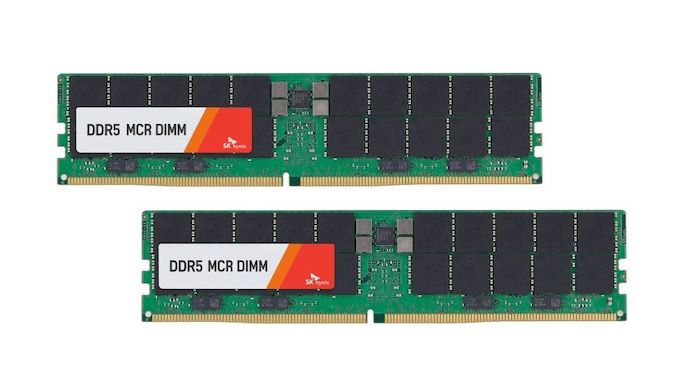
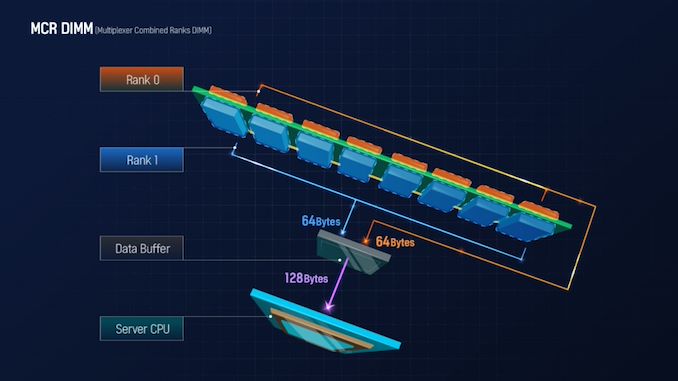
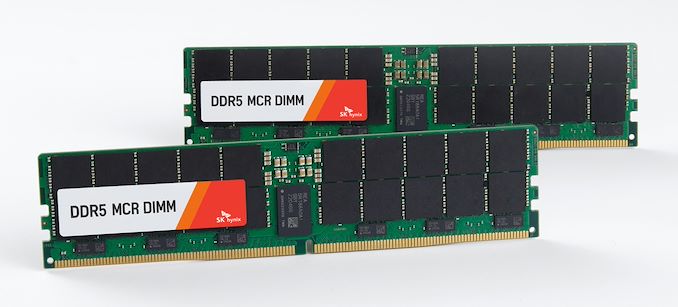

 Quote
Quote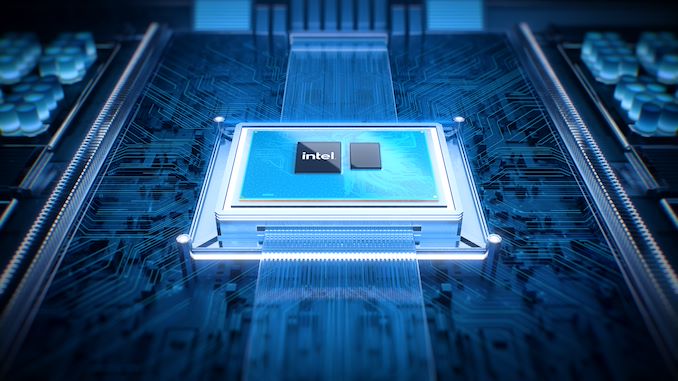
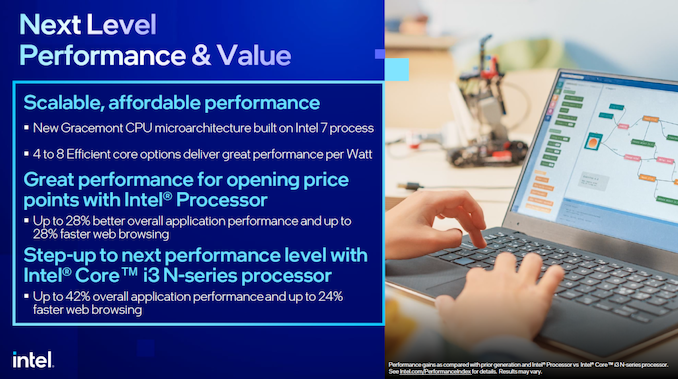



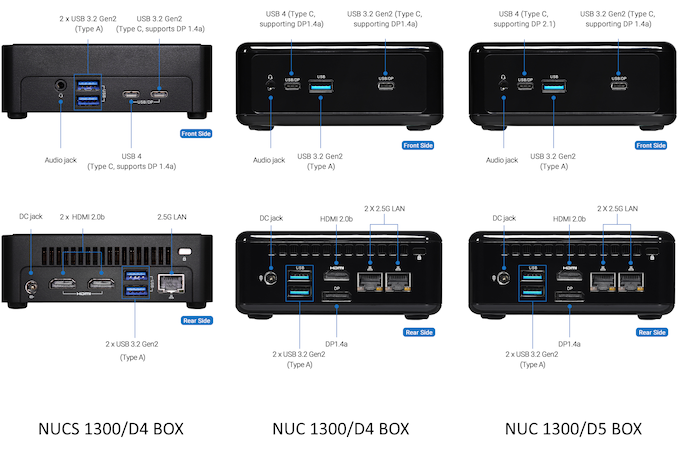
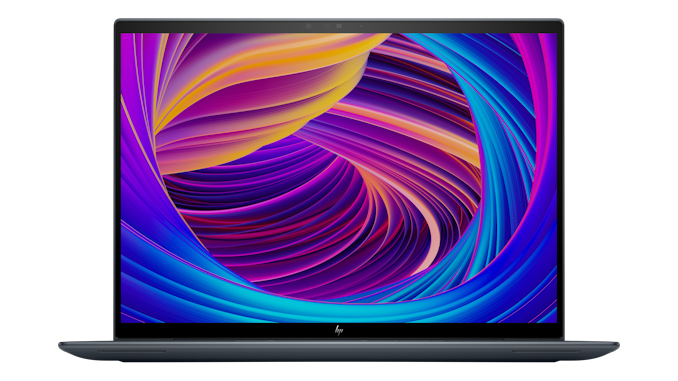
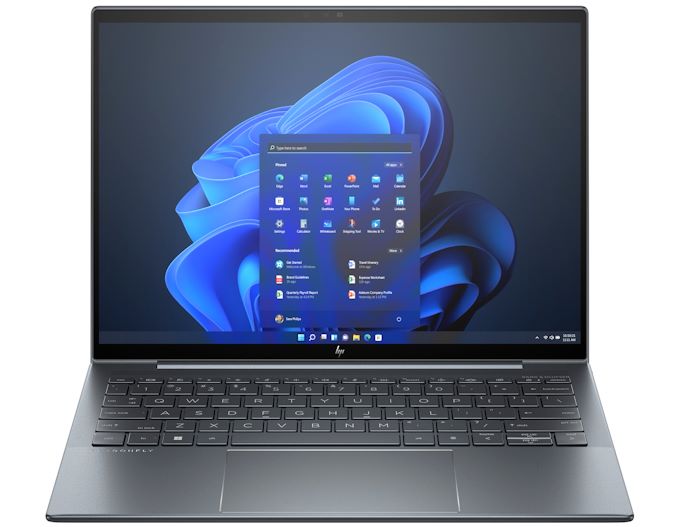
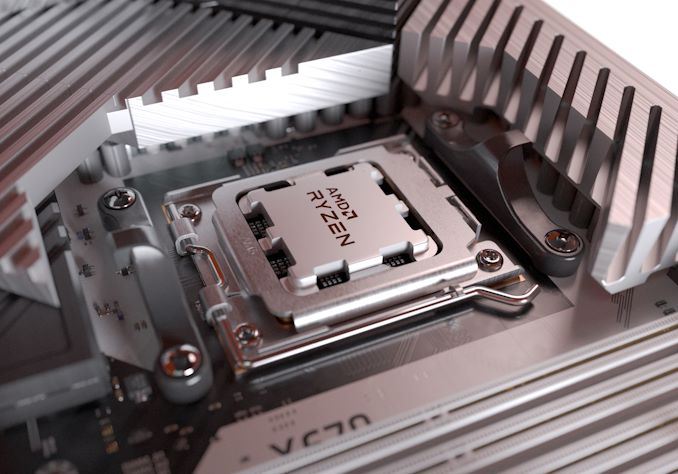
















Bookmarks